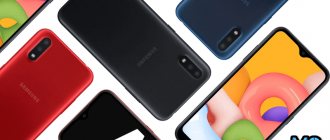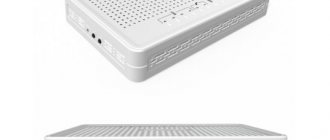Photo: pixabay.com
Are you planning to upgrade your phone and are faced with the problem of choosing between the long-time favorite Samsung and the relatively young but promising brand Xiaomi? The confrontation between these companies has become very heated, and this plays into the hands of ordinary consumers, that is, us. Let's figure out what innovations the famous Korean brand Samsung can offer and how Chinese Xiaomi responds to this.
Xiaomi vs Samsung: processor and operating system
In terms of technical components, Samsung smartphones have always been and remain at their best, even surpassing their competitor Xiaomi. But it’s fair to note that this applies mainly to flagship models, while for “state budget” models everything is not so clear.
The Chinese manufacturer uses the Qualcomm chipset even in inexpensive phones. In terms of performance, it is considered one of the best in its class. The company does not install cheap processors, with the exception of some of the most budget smartphones.
Samsung has a slightly different policy. There are quite a lot of models in its line with gradually aging processors. Modern models are equipped with Exynos chips, which, although slightly, are inferior to their competitor Qualcomm, all other things being equal.
Qualcomm Snapdragon 8 series is the flagship line of performance chipsets. Most Xiaomi smartphones work on them. Photo: pixabay.com
For a full comparison of Samsung and Xiaomi, you should also pay attention to their operating systems:
- The “Chinese” uses its own MIUI platform, created on the basis of Android, but differs favorably from it with more flexible settings. Some users consider this system to be the best on the market, although there are many haters.
- Samsung smartphones are released with pure Android, which initially has a minimal set of applications. The manufacturer invites users to independently choose what is more convenient for them to use.
It is impossible to clearly select the best operating system. For example, some people don’t like that they spend a lot of time getting to know MIUI: they have to start by studying many applications and filtering out the unnecessary ones. However, if you are used to Chinese smartphones, this will not be a big problem.
As for Android, some users call its main disadvantage the placement of a minimum number of settings in the “curtain”. In outdated versions (below Android 9.0), you cannot edit anything at all. In MIUI, in turn, you can set any parameters at your discretion.
The latest One UI shell for Android, which Samsung has been using since 2021 (previously Samsung Experience), has become much more convenient than its predecessor. For example, the long-awaited dark theme for the interface has appeared.
Comparison of Xiaomi and Samsung phones
Since the Xiaomi and Samsung device lines come in hundreds of different models, there is no point in stopping at two separate smartphones. In this regard, it is proposed to go through the main characteristics, highlighting devices of different price segments (budget, mid-budget, flagship).
Performance
The operating experience directly depends on the power of the smartphone. The more productive the processor is installed, the more comfortable it is for the buyer to use the device.
Of course, both Samsung and Xiaomi maintain a clear gradation between budget and flagship models. Entry-level smartphones are equipped with weak processors, while premium ones are equipped with the most powerful ones.
If we consider the budget class, then here the manufacturers will have parity. Both the Samsung Galaxy A01 and Xiaomi Redmi 8A released in 2021 are based on the Qualcomm Snapdragon 439 chipset. Not surprisingly, the performance of the devices is about the same.
But in the mid-budget class, it becomes clear which manufacturer is saving on processors. Let's take the Samsung Galaxy A51 and Redmi Note 8 Pro smartphone as an example. Both devices cost a little less than 20 thousand rubles in official retail, but at the same time they differ strikingly in power levels.
In AnTuTu testing, Samsung scores a modest 180 thousand points, while the opponent reaches 283 thousand points. If you are choosing between the two presented smartphones, we recommend that you read a more detailed comparison.
In the flagship segment, the situation is not so clear-cut, but no less interesting. Galaxy S20 Ultra and Xiaomi Mi 10 Pro are positioned as the coolest smartphones from both brands. They are based on top processors from different manufacturers: Samsung Exynos and Qualcomm Snapdragon, respectively. Despite similar characteristics, Xiaomi is beaten by the unstable flagship of the Koreans.
In the American market, Samsung flagships are produced with Snapdragon processors. Therefore, it makes sense to order a device that has not been certified in Russia.
By comparing models of all classes of devices, we can make a clear conclusion that, all other things being equal, Xiaomi smartphones are noticeably more powerful. So you should choose a gaming device among Chinese devices.
Design and management
All modern smartphones look about the same. Now the main experiments concern the placement of the front camera. In 2018, “bangs” were popular, in 2021 – “droplet”, and in 2021 – “droplet”. All these trends could be seen in the lines of both Samsung and Xiaomi. Except that the Koreans did not dare to do “bangs”, preferring a classic body with wide frames.
Now the devices of the two companies are very similar to each other. On the front there is a display with a “dot” or “droplet”, and on the back there is a glossy cover. As for the controls, it is also difficult to make a clear choice in favor of one brand or another. Since smartphones are now released without physical buttons, interaction is carried out using gestures or on-screen keys.
Display
Samsung has always been famous for its screens. By 2021 the situation has not changed much. Samsung is still a trendsetter in the display market. Even the brand's mid-budget devices receive AMOLED matrices, which are distinguished by color rendering quality and saturation. The only exception is the cheapest Samsung devices, which still continue to install an IPS screen.
Few people know, but Samsung’s main opponent, Apple, puts matrices from the South Korean brand on its smartphones.
Unfortunately, Xiaomi cannot boast of such high quality screens as Samsung. Chinese flagships, of course, also get AMOLEDs, but devices cheaper than 25 thousand rubles in Russian retail always get IPS displays. This prevents the fingerprint scanner from being integrated into the screen, and the frames look much thicker. To confirm the words, just look at the Redmi Note 9 Pro and the previously mentioned Samsung Galaxy A51.
There is probably no point in explaining which side has the advantage in this aspect. The reward point definitely goes to Samsung's piggy bank.
Cameras
If a person chooses a smartphone for high-quality photos and videos, then he should first of all pay attention to devices from the Huawei and Apple brands. The participants in today's comparison are catching up, but at the same time they also show decent results in the field of cameras.
It was Samsung and Xiaomi that set the trend for 48-megapixel photo sensors in the segment of inexpensive devices. And although resolution is nothing more than interpolation (software division of pixels), iPhones cannot boast of such a level of innovation.
When choosing a smartphone, do not pay special attention to the camera resolution. Take a better look at the aperture ratio or pixel size.
In the flagship segment, Chinese and South Korean brands are also making waves. Xiaomi released the first smartphone with a 108-megapixel camera (Mi Note 10), and Samsung for the first time demonstrated 100x zoom while shooting and support for 8K video (Galaxy S20 Ultra).
When comparing devices that are similar to each other head-on, it will not be possible to give an advantage to one of the companies. Both Samsung and Xiaomi shoot about the same. And the final quality depends on the cost of the model. The higher the better. However, as always.
Battery and operating time
Autonomy is one of the most important characteristics of a smartphone. A model that lasts longer is more likely to become in demand among buyers. Xiaomi has always been in a leading position in this aspect, and Samsung was on par with iPhones that did not live to see the evening.
Fortunately for fans of the South Korean company, since 2021 there has been a serious shift towards autonomy in the line of Samsung devices. Some of the company's models (Galaxy A31 or M31) receive 6000 mAh batteries. It immediately becomes clear that such smartphones work for 2 days on a single charge. Xiaomi, in turn, continues to maintain its brand. So in terms of autonomy, both brands are in leading positions.
Software
Samsung and Xiaomi smartphones are based on the Android operating system. But in both cases, the “little green man” is dressed in a branded shell. In the case of Koreans, this is OneUI, and for Xiaomi a special MIUI has been developed.
Surprisingly, Xiaomi's first product was not a smartphone, but the MIUI shell.
The stability and friendly interface speak for the Samsung firmware. Xiaomi has multifunctionality and a huge number of settings. At the same time, the Xiaomi shell has built-in advertising.
But an experienced user can easily disable affiliate offers through the device settings and without downloading additional software. Therefore, in comparing software, you can also put an equal sign between Samsung and Xiaomi.
Signal quality
It would seem that in 2021 all smartphones can receive LTE without problems, and some even 5G. But not long ago it became clear that some Samsung devices have very serious communication problems.
Due to the location of the antennas, Galaxy A51 owners constantly complain about connection failures via Bluetooth, Wi-Fi or mobile network. This problem was covered in detail in the Samsung review.
There are no such problems on Xiaomi, but the buyer may also encounter some difficulties. For example, if he orders a smartphone with Chinese firmware. It does not support the main Russian communication bands. But if we compare exclusively official retail, then in terms of connection quality there will be a noticeable advantage of Xiaomi over Samsung.
Memory
Both manufacturers spare no free space so that the buyer can load all the necessary data into the device’s memory. Of course, in the case of cheap models like the Galaxy M11 or Redmi 8, the user is dealing with 32 gigabytes of storage. But even in this case, there is an alternative option - installing a MicroSD card of almost unlimited capacity.
Samsung follows this tradition even in its flagship line, unlike Xiaomi. On a conditional Xiaomi Mi 9T for 20-25 thousand rubles in a 64 GB configuration, the user will not be able to install a memory card. So Samsung smartphones beat their competitors in terms of available space due to the ability to use the MicroSD interface, regardless of class.
Phone capabilities
Samsung and Xiaomi are always striving for innovation. The first 108 megapixel camera, the first 8K mode, the first 100x zoom - all this is about the participants in today's comparison.
Also, both brands try to equip their devices with all the necessary interfaces. When it comes to charging, in most cases the user will deal with USB Type-C. NFC is almost always provided for contactless payments.
Support for contactless payments is more common on Samsung than on Xiaomi.
The only advantage of Xiaomi in terms of additional features is the presence of an infrared port for controlling home appliances. But this is unlikely to be the decisive argument when choosing a device from a particular brand. So, in terms of capabilities, the devices are approximately equal.
Build quality
For a long time, it was believed that smartphones from China were basement devices assembled on the knee. But thanks also to the Xiaomi company, the Russian buyer is gradually moving away from such a statement.
Xiaomi tries to choose premium materials for its smartphones (glass and metal), and carries out assembly with the highest possible quality, paying attention to the smallest details.
Surprisingly, South Koreans skimp on build quality. Their devices are mainly assembled in Vietnam, where people work in factories for very little money. And if we add to this the use of cheaper materials in comparison with Xiaomi, then the question of who will get the extra point disappears by itself.
Xiaomi vs Samsung screens
Comparing the displays in the battle of Xiaomi and Samsung phones, the victory can be given to the “Korean”, if only because it is he who is considered the trendsetter. It is Samsung that usually introduces new technologies in this area, and its matrices are used by Apple itself for its iPhones. Even inexpensive Samsung smartphones are equipped with high-quality AMOLED displays.
Xiaomi also has good screens, but only in the high and mid-price segments. State-priced models have an IPS matrix, which has flare at the edges and is not capable of providing deep blacks.
With all the advantages, Samsung screens have one significant drawback for some users. For some reason, the company does not use the DC Dimming function to reduce the flicker frequency. This is a very useful technology, thanks to which the eyes do not get tired so quickly when interacting with the phone for a long time. IPS displays are preferable in this regard, although they do not have the best color reproduction.
The DC Dimming feature is very useful if you do a lot of reading on your phone screen. It makes your eyes less tired and your vision is preserved. Photo: overclockers.ru
Let's sum it up
To find out which is better to take - an iPhone or a Samsung, I will remember the main points from my test. They will help you decide.
In my opinion, the undeniable pros and cons of iPhones are:
pros
- technical indicators, speed and performance;
- faster;
- iOS with regular updates;
- reliability;
- good battery life;
- original design.;
Minuses
- not the best screen;
- good, but not great, camera;
- phone cost – from 12 to 60 thousand;
- the cost of potential repairs in the event of a breakdown is from 1000 rubles and above.;
I highlighted the following pros and cons of Samsung:
pros
- best screen – Dynamic AMOLED;
- the best cameras up to 108 megapixels with software photo processing;
- mobile operator signal quality;
- stylish frameless design;
- Android and One UI;
- phone cost – from 7 to 70 thousand;
- the cost of potential repairs in the event of a breakdown is from 300 rubles and above.;
Minuses
- performance, technical characteristics;
- The size of the phablet is not suitable for everyone;
- more frequent breakdowns, technical defects are also possible;
As a result, I was unable to draw a clear conclusion and give you an accurate recommendation. Both in the iPhone vs Samsung comparison produce excellent gadgets. Every year they surpass each other, becoming better. If you need a good camera and a great screen, choose Samsung. If speed, smooth operation and reliability are your priority, the iPhone is your choice. I hope this article will help you with your choice.
Sources
- https://SmartBobr.ru/dlyasmartfonov/ajfon-ili-samsung/
- https://samsung-wiki.com/chto-luchshe-iphone-ili-samsung.html
- https://tehno.guru/ru/chto-luchshe-samsung-ili-ajfon/
- https://zen.yandex.ru/media/apptime/apple-ili-samsung-vybiraem-luchshie-smartfony-v-raznyh-cenovyh-kategoriiah-5f44c61221c767179202a7f5
- https://mobile-review.com/articles/2020/guide-iphone-11-galaxy-s20.shtml
- https://best-magazin.com/novosti/sravnenie-apple-iphone-11-s-samsung-galaxy-s20-kakoy-luchshe.html
- https://mobile-review.com/articles/2020/guide-iphone-12-pro-galaxy-s20.shtml
- https://lumpics.ru/what-is-better-iphone-or-samsung/
- https://strana-it.ru/kakoj-smartfon-vybrat-samsung-ili-ajfon/
- https://zen.yandex.ru/media/hyperu/chto-luchshe—iphone-ili-samsung-5cadb8a584805b00aef6dc13
- https://besprovodnik.ru/iphone-ili-samsung-chto-luchshe/
[collapse]
Which phone is better built - Xiaomi or Samsung
In terms of build quality and design, Chinese smartphones are gradually catching up with the famous brand. Gradually, Xiaomi even introduces such pleasant little things as wireless charging. The Chinese manufacturer cannot, unlike Samsung, boast the same dust protection and water resistance of smartphones, but they also have their own tricks. For example, some models were equipped with retractable front cameras, although not all users found this solution successful.
In general, it is difficult to single out a clear leader in the assembly and design of models - everyone chooses what they like best. From a visual point of view, both Galaxy, Redmi, and Xiaomi Mi look decent and modern.
Samsung smartphones are a little thinner and lighter than the “Chinese” ones, but that’s where the advantages end. For example, when the battle between the Galaxy A10 and Redmi 8 unfolded on the market, the latter were clearly more interesting. Their back panel still looks stylish and original, while Samsung's initially looked cheap.
As for the flagship models of 2020–2021, here the first place in terms of visual component can be given to Samsung smartphones. In terms of protective characteristics, they are also excellent. For example, the Galaxy S21 has an IP68 protection rating, while its direct competitor, the Xiaomi Mi 11, does not have it at all.
With IP68 protection, the smartphone is dust-resistant and can be submerged in water to a depth of 1 meter for more than 30 minutes. Photo: businessinsider.com
Features of manufacturers Samsung and Xiaomi
Samsung is a South Korean company founded back in 1940. Throughout its existence, Samsung has been at the forefront of technology. Smartphones appeared in the brand’s product line not so long ago (10 years ago), but they immediately absorbed all the features of the brand.
Samsung devices often emphasize the status of the owner when it comes to flagship models. Therefore, Koreans are often called Apple's main competitors. But at the same time, Samsung also has budget smartphones at the entry-level. Thus, buyers with different income levels always have a choice.
With Xiaomi the situation is both opposite and similar. There are no contradictions in this, you just need to understand that Xiaomi is a young brand (appeared in 2010). The company immediately began developing smartphones. Their first devices had top-of-the-line hardware, but at the same time cost significantly less than their competitors.
Since 2021, the Xiaomi brand has set its sights on the premium segment. The company's flagship devices have a similar price tag to Apple and Samsung.
Today, the company’s line of devices includes both the simplest devices, allocated to the Redmi sub-brand, as well as the flagships of the “Mi” series. That is, the choice among the company’s smartphones is as wide as Samsung’s.
Which smartphones take better photos - Samsung or Xiaomi
For many users, the camera is one of the main criteria for choosing a phone. The Chinese manufacturer uses fairly high-quality modules, which are created with the support of the legendary Leica brand. Many experts consider these products to be better than many analogues, but this is only true for flagships. Budget and mid-budget, as well as simply outdated Xiaomi models are definitely behind Samsung in terms of shooting.
Koreans even install high-quality cameras in budget models that are superior to competitors in their price segment. If we compare flagships, Samsung is generally one step ahead in all respects: color reproduction, quality of night shots, clarity of video stabilization, and so on.
However, if you prefer to shoot at a wide angle, Samsung's budget models may disappoint you. This is their weak point, since phones are equipped with a cheap wide-angle sensor. It negates detailing, distortion correction (this is a certain type of image deformation) and creates a pronounced “barrel” effect (curvature of the image at the edges). Xiaomi from the budget segment is head and shoulders above in this regard, but it also lacks stars from the sky.
Without going too deep into other details, we can give two recommendations regarding cameras:
- If you buy a flagship model, take a closer look at Samsung: they take better pictures.
- If you are looking for a budget or mid-budget option, you should still pay attention to Xiaomi.
Xiaomi Mi 11 abandoned the huge scattering of cameras on the back side, leaving a small, neat unit with an impressive main lens. Photo: mashable.com
Ruler
The first thing we will talk about is what product lines the companies have. This will help form a first impression and understand what the mobile segment of each manufacturer is. In this context, it makes sense to look only at Samsung, since Redmi is one of the Xiaomi lines.
And this is how many different series the South Korean brand has in its arsenal:
- Galaxy S is the main flagship line. The company places greater emphasis on this series. These are premium smartphones that improve year after year in all respects (cameras, performance, etc.).
- Galaxy Note – devices with a larger screen diagonal. Positioned mainly for work, entertainment and creativity. They support a proprietary stylus, which in skillful hands expands the capabilities of a basic smartphone.
- Galaxy Z are non-standard smartphones that also receive top-end hardware. At the moment these are devices in some futuristic format. For example, Z Fold3/Z Flip3 with unique folding mechanisms and appearance.
- Galaxy A are smartphones in the mid- and budget price segment. They often cost much less, unlike models from other lines of the company, but they also have weaker hardware (worse cameras, processor, etc.). The emphasis is on elegant design and balanced performance at an affordable price.
- Galaxy M is another line whose smartphones are in many ways similar to representatives of the A-series, but with the difference that they save more on design and materials and at the same time often install a more capacious battery.
If the article were about comparing the Samsung brands with Xiaomi, then the latter would have no chance to emerge victorious according to the first criterion. And this is even despite the fact that in 2021 the Chinese company took 2nd place in terms of equipment supplies and showed an increase of 83% compared to previous results (for reference, Samsung’s growth is 15%) according to canalys.
Which smartphone - Xiaomi or Samsung - has more memory?
In this regard, both manufacturers achieved good results (128 GB and above), with the exception of the cheapest models. In them, the memory capacity is at 32 GB, sometimes 64 GB, for example:
- Galaxy A02 and A02S – 32 GB
- Galaxy A12 – 32 or 64 GB
- Redmi 9, and - 32 GB
- Xiaomi Poco M3 – 64 GB
Almost all smartphone models of both brands have a microSD memory card slot, which in most cases solves the problem of lack of free space. As for the flagships, everything is also approximately the same with them, so it is impossible to single out a leader in memory capacity among the two companies.
Screens
Coming close to the hardware and more important components of a smartphone, let's start with the display. It is very important that the device is equipped with a high-quality screen, because not everyone wants to strain their eyes by viewing content on a phone with a low matrix resolution or terrible viewing angles.
Samsung
When talking about displays in smartphones, when many people hear the word Samsung, the association “AMOLED” immediately comes to mind. This is because the South Korean company is one of the world's largest manufacturers of active matrices based on organic light-emitting diodes, sharing the leading position with.
It is simply beneficial for the brand to use AMOLED displays in its smartphones. Moreover, considering that this type of matrix is widely used not only in smartphones, but also in any other technology. Such panels have a huge number of advantages regarding the picture, but are not the most durable. In addition to the standard AMOLED matrix, some devices (Galaxy A32, A51, A72, etc.) use options created using improved Super AMOLED technology.
However, some cheaper models receive PLS panels (a slightly modified version of IPS panels introduced by Samsung in 2010). Among them are Galaxy A12, A03s, A02 and others.
Advantages of AMOLED:
- Better contrast and black depth. Each pixel in AMOLED lights up separately, or, if necessary, turns off completely, thereby displaying the natural “blackest” color.
- High response speed. This manifests itself in dynamic scenes with constant picture changes. The image on AMOLED is smoother compared to IPS, which is noticeable in games.
- Good energy saving. By completely turning off power to unnecessary pixels and black display, you can reduce power consumption.
- Very thin design. This allows you to create flexible AMOLED displays, which cannot be done with other matrices.
Disadvantages of AMOLED:
- PWM effect. One of the main disadvantages that appears at low brightness levels. The reason why your eyes can get very tired from a smartphone.
- Burnout of blue diodes and color disturbances appear in most AMOLEDs after prolonged use.
- Memory effect. The disadvantage follows from the previous one: burn-in causes the appearance on the screen of barely noticeable (sometimes quite bright) silhouettes of those elements that were previously displayed for a long time.
Redmi
In turn, the vast majority of Xiaomi devices, including those from the Redmi series, are equipped with IPS displays. However, sometimes the company announces smartphones with AMOLED panels (Redmi Note 10S), but this happens quite rarely if we are talking about the mid-budget line.
Advantages of IPS:
- Better color rendition. IPS panels boast a maximum color gamut, which allows you to most accurately convey the shades of any objects. Designers, photographers and other professionals choose IPS.
- Reliability and durability. Unlike AMOLED, this technology does not have problems such as burn-in or memory effect. Crystals practically do not wear out.
- Unchanging power consumption. The smartphone battery charge is consumed depending on the backlight level and does not depend on the operation of the crystals. Thus, in any scenario, energy consumption with equal backlight brightness will be almost identical.
Disadvantages of IPS:
- Black color is far from ideal. Due to the nature of the technology and design of such panels, in some scenarios it can be very noticeable that the black color has a strong shade of gray.
- Low contrast. Another minus, directly related to the previous one. Considering the fact that the black color is not as deep as, for example, AMOLED, the difference between the lightest and darkest pixels is small.
- Not the best response time.
It is impossible to evaluate each other and unambiguously answer the question of which matrix manufacturing technology is better. Each type has its own pros and cons, so in this case the choice is individual for everyone. The worst displays today are TFT, but none of them, so they get 1 point each.
Comparison table:
| Samsung | Redmi | |
| Display | + | + |
| Total: | 2 | 3 |
How to compare the battery life of Samsung and Xiaomi
Smartphones from the Chinese brand deserve the palm in terms of battery life, although Samsung is constantly improving this indicator. Xiaomi adheres to a simple principle: install a larger battery, losing the lightness and minimal thickness of the smartphone. Even budget phones from Xiaomi have a battery of 4000 mAh, while cheap Samsung ones have a battery capacity of approximately 2500–3000 mAh.
Although there are exceptions. Mi Note 10 has 5260 mAh, while its competitor Galaxy M21 has 6000 mAh. If we compare the latest Xiaomi Mi 11 and Galaxy S21 models, the Chinese are ahead here: 4600 mAh versus 4000 mAh.
These are numbers, but what about real autonomy indicators? Everything is not so clear here. Due to more energy-efficient displays and other features, Samsung smartphones are often as good as, and sometimes even superior to, their competitors in operating time. For example, when watching a video, a full charge of the Xiaomi Mi 11 lasts for 14 hours, and the Galaxy S21 lasts for more than 15 hours. And this is provided that the latter has a battery capacity of 600 mAh less.
System and shell
Today, every manufacturer is trying to find its own path of development and somehow stand out from its competitors. One way to achieve this is to equip your smartphones with a new shell, in which it will be possible to implement any unique functions.
What is a shell? In the Android world, this term is used to call every operating system based on a “green robot”. Since Android is open source, any developer can create his own OS with various modifications.
Whether your smartphone will lag or surprise you with strange bugs depends on how well the operating system is written. And so that mere mortals like us have at least some idea of which shell is better, there are many ratings and tests. During them, experts evaluate operating systems according to various parameters and make an assessment.
The following test has already been carried out in 2021:
Source: weibo.com
Now let's look at the results and remember that Redmi smartphones work under the MIUI shell, Samsung - under the One UI shell. The difference between 1st and last place in the ranking is approximately 34 points. The similar value between MIUI and One UI is almost 10 points. Consequently, there is a gap and it is quite noticeable. However, abstracting from the numbers, in practice the difference is unlikely to be noticeable, but the bottom line is what we have.
Comparison table:
| Samsung | Redmi | |
| System speed | — | + |
| Total: | 3 | 5 |
Which phone is better in terms of additional options - Samsung or Xiaomi
One of the main additional functions that the Chinese often lack is contactless payment using the NFC module. In other respects, Xiaomi even surpasses the Koreans. For example, Chinese brand smartphones often have:
- Built-in FM tuner that works without connecting headphones
- IR port for controlling household appliances
- VoLTE support (this is a voice transmission technology)
- FaceID for facial recognition (even in budget models)
As for the NFC module, in 2019–2020 it began to be built into Xiaomi smartphones, with the exception of the most budget ones. Samsung, in turn, has always supported this technology.
FaceID is a very convenient feature that replaces the fingerprint scanner. It was first introduced by Apple in 2021. Photo: bgr.com
Which smartphones are cheaper
In terms of price, Xiaomi devices are more attractive, and for many this is the key criterion for choosing a smartphone. Chinese flagships are sold at prices that are comparable to mid-range Samsung, although the situation has been gradually changing recently.
The demand for Xiaomi smartphones is actively growing, so the manufacturer allows itself to increase their prices. It is expected that in a few years the prices of smartphones from both brands will be almost the same. Everything will depend on the popularity of their gadgets in the market.
Which phone is better according to buyers - Samsung or Xiaomi
User opinions differ, as both brands have their fans. Even if Xiaomi is inferior to the Korean company’s devices on many fronts, this does not prevent it from gradually conquering the market. As for Samsung, there is a strong feeling that the manufacturer is targeting flagship and mid-budget gadgets. People who choose inexpensive phones often prefer Chinese gadgets: they are more productive, have better battery life, and even have superior shooting quality.
What are the good things about Xiaomi smartphones and what are their disadvantages?
Finally, about the pros and cons of smartphones of both brands. Let's start with a Chinese company.
Advantages of Xiaomi
1. Good balance between price and quality. With a similar set of functions, Samsung phones are more expensive.
2. Good ecosystem. All brand devices are combined into a single infrastructure: from smartphones to household appliances.
3. In the MIUI shell, the interface is customizable and there are a lot of useful functions: root rights, energy saving, blocking calls and messages, convenient traffic monitoring, and so on.
4. Budget models are quite autonomous, but you have to pay for this with slightly increased dimensions.
Disadvantages of Xiaomi
1. An extensive product line that makes it difficult to choose: the brand has many devices with identical characteristics.
2. Unremovable software. Even though MIUI is flexible, some apps cannot be uninstalled.
Xiaomi Mi 11 and Samsung Galaxy S21 are competing 2021 flagships from two brands. Photo: xda-developers.com
Which is better Samsung or Redmi: comparison of smartphones by characteristics
A general overview of the model range does not make it clear which company’s device is best to buy. A comparison of characteristics and real reviews will finally dot all the i’s. To do this, you need to compare devices of different price categories.
State employees
In this class, a battle between the most popular creations of both companies suggests itself. The presented smartphones are quite new and are very popular in Russian retail.
| Redmi 8A | Galaxy A01 | |
| Material | Plastic | |
| Screen | 6.2”, 720p (IPS) | 5.7", 720p (IPS) |
| Frontal | 8 MP | 5 MP |
| Main camera | 12 MP | 13 MP + 2 MP |
| CPU | SDM439 | |
| Battery | 5000 mAh | 3000 mAh |
| Prices (RUB) | 7990 | |
In all characteristics, Xiaomi is superior to the Korean giant. But what will budget budget owners say?
Sergey, owner of Redmi 8A
Excellent value for money and quality. A phone with a huge battery and support for ultra-fast charging, but for me there is too little RAM and lacks NFC.
Nikolay, owner of Galaxy A01
Constant freezes and loss of connection. But for its class the device is probably not bad.
Mid-income earners
At the middle level, competition between long-lasting gadgets is coming. The new Xiaomi product has not yet gone on official sale, but some people have already appreciated the model.
| Redmi Note 9 Pro | Galaxy A71 | |
| Material | Glass | Plastic |
| Display | 6.67”, 1080p (IPS) | 6.7", 1080p (AMOLED) |
| Frontal | 16 MP | 32 MP |
| Main camera | 64/8/5/2 MP | 64/12/5/2 MP |
| Chipset | SD 720G | SD 730 |
| battery | 5020 mAh | 4500 mAh |
When comparing the advantages and disadvantages of the models, they are approximately equal. Yes, Samsung has plastic parts, but it has better photo sensors. And the Redmi is made of glass and also has an impressive battery. But what do real users say?
Kamil, owner of Redmi Note 9 Pro. Powerful processor handles all games. And in general the phone is top-end. Except it doesn't make coffee.
Oleg, owner of Galaxy A71
For that kind of money, plastic is a lot of money. And for some reason the interface is slow. Well, at least the camera didn't let us down.
Flagships
Brand lines are replete with cool flagships. What happens if you compare them with each other?
| Xiaomi Mi 10 Pro | Galaxy S20 Ultra | |
| Material | Glass | |
| Screen | 6.67”, 1080p (AMOLED) | 6.9”, 1440p (Dynamic AMOLED) |
| Frontal | 20 MP | 40 MP |
| Main camera | 108/20/12/8 MP | 108/12/48/0.3 MP |
| CPU | Snapdragon 865 | Exynos 990 |
| Battery | 4500 mAh | 5000 mAh |
| Retail price | 59990 rub. | 109900 rub. |
The difference in price between the flagships is simply colossal. But in terms of characteristics, Xiaomi is practically no worse than Samsung. What is the opinion of buyers?
Pavel, owner of Xiaomi Mi 10 Pro
Best device I've ever used. Gorgeous Dolby Atmos speakers and a processor for any game. I am very glad.
Arseny, owner of Galaxy S20 Ultra
Arseny, owner of the Galaxy S20 Ultra. I was impressed by the 120 Hz screen and cool sound. But why did they install this Exinos? Disgusting percentage.
What features do Samsung phones have?
Now let's move on to the pros and cons of gadgets from the South Korean company and figure out what it can do against its Chinese competitor.
Samsung Advantages
1. The main part of the components is of our own production. Therefore, the company is the first to introduce many innovative features.
2. There are authorized centers all over the world, which eliminates problems with repair or warranty service.
3. Samsung uses its own high-quality matrices (they are even purchased by other smartphone manufacturers). Thanks to access to source data, Samsung adapts the software to the hardware.
4. The brand is constantly upgrading OLED technologies to produce high-quality displays.
Disadvantages of Samsung
1. Higher price for smartphones compared to Xiaomi.
2. The presence of inconvenient and strange options. For example, until 2021, the Bixby voice assistant button couldn't be disabled or reconfigured.
3. Obtaining root rights or other interference with the software removes the phone from warranty service (the proprietary Knox mobile security system is triggered).
Advantages and disadvantages of Samsung
The advantages include:
- RAM 4 GB;
- nice design;
- availability of branded cases, wireless charger and other accessories;
- energy saving system;
- display;
- realistic pictures on both cameras;
- warranty repair.
Among the disadvantages of the company's products, we highlight the fact that over time they stop releasing updates for older models.
Software support period
Flagship models receive firmware updates for about 2 years, which is still not bad. But simpler devices can be supported for only six months or a year, having received one major OS update. Then the manufacturer limits itself to a maximum of minor updates, such as security patches.
Difficulty of choice
A side effect of the large number of models is that it is difficult to choose. There seem to be a lot of smartphones, but they are similar to each other. As of spring 2021, Koreans have neither a super-compact device (like the iPhone SE) nor a phablet (like the Mi Max 3 or Huawei Mate 20 X). There are two dozen mobile phones, but it can be difficult to catch the main differences between them and choose the best one.
Risk of disappointment with an inexpensive model
All iPhones belong to the upper price category and leave approximately the same impression. Samsung doesn’t have this, you can admire the flagship, and then “come down to earth” by using a more budget device.











